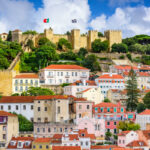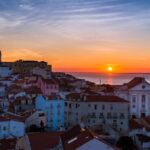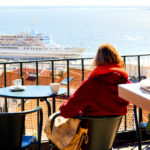Rossio Square: Tracing the Historical Heart of Lisbon
Rossio Square, also known as Praça Dom Pedro IV, is a bustling and historically significant square located at the heart of Lisbon. This vibrant space has been at the center of the city’s life for centuries, and its history is as rich and colorful as the city itself.
Origins and Development
Rossio Square’s history can be traced back to the 13th century, making it one of the oldest squares in Lisbon. Originally, it was known as Praça de Dom Afonso IV, named after King Afonso IV. Over the years, it has gone through several transformations, witnessing events and developments that have shaped the city.
The Name Change
The square underwent a name change during the 19th century when it was renamed Praça Dom Pedro IV, in honor of Pedro IV of Portugal, who was also known as Pedro I of Brazil. This name change reflects the historical ties between Portugal and Brazil.
Architectural Highlights
Rossio Square is surrounded by magnificent buildings that exemplify Lisbon’s architectural diversity. Some of the architectural highlights around the square include:
The Rossio Train Station (Estação do Rossio)
- This stunning train station, built in the neo-Manueline style, is an architectural gem. Its façade is adorned with intricate carvings and azulejos (Portuguese ceramic tiles) that depict scenes from Portugal’s history.
Teatro Nacional D. Maria II
- The National Theatre of D. Maria II, located at the northern end of the square, is a prominent Neoclassical structure that hosts a wide range of performances, including plays, operas, and ballet.
Cultural Significance
Rossio Square has been a significant site for various cultural and historical events. It has been a hub for festivals, fairs, and celebrations throughout the centuries. The square has also witnessed important political gatherings and protests.
One of the most notable events in Rossio Square’s history was the execution of Inês de Castro in 1355. Inês de Castro was the lover of King Peter I of Portugal, and her tragic end became a symbol of love and devotion in Portuguese folklore.
Contemporary Life
Today, Rossio Square remains a vibrant and lively part of Lisbon. It is a favorite meeting place for locals and tourists alike. The square is surrounded by cafes and restaurants, making it a perfect spot for people-watching, enjoying a meal, or simply relaxing.
The central location of Rossio Square also makes it an excellent starting point for exploring the city. You can easily access other historic neighborhoods such as Baixa, Bairro Alto, and Alfama from this iconic square.
The enduring allure of Rossio Square lies not only in its historical significance but also in its role as a vibrant gathering place. It’s where the pulse of Lisbon can be felt in every footstep, and where locals and visitors come together to share in the city’s energy and spirit.
Festivals and Celebrations
Rossio Square has long been a hub for festivals and celebrations, and it continues to be a focal point for cultural events. Whether it’s a lively carnival, a vibrant street parade, or a traditional festival, the square comes alive with music, dancing, and colorful displays.
One of the most famous events held in Rossio Square is the New Year’s Eve celebration. As the clock strikes midnight, the square fills with revelers, and fireworks light up the sky, welcoming the new year with a sense of unity and joy.
Culinary Delights
The square’s surroundings are adorned with an array of cafes, restaurants, and pastry shops that offer a delightful culinary experience. You can savor traditional Portuguese pastries, sip on a cup of coffee, or enjoy a meal while taking in the lively ambiance.
Café Nicola, one of the oldest coffee houses in Lisbon, has been a gathering place for artists, intellectuals, and locals for centuries. It’s a great spot to soak in the historical atmosphere while enjoying a cup of coffee.
Accessibility and Exploration
Rossio Square is a strategic starting point for exploring Lisbon’s historic neighborhoods. You can easily access the charming streets of Alfama, the bustling markets of Baixa, and the nightlife of Bairro Alto from this central location.
Visitors can also take a leisurely stroll down Rua Augusta, a pedestrian street that leads from Rossio Square to the magnificent Commerce Square (Praça do Comércio), which faces the Tagus River. The entire route is lined with shops, street performers, and outdoor cafes.
A Timeless Experience
In conclusion, Rossio Square is more than just a historical landmark; it’s a living testament to Lisbon’s vibrant culture, its diverse history, and its modern allure. Whether you come for the historical significance, the cultural events, the culinary delights, or simply to soak in the atmosphere, Rossio Square offers a timeless experience that captures the essence of Lisbon.
As you wander through the square, surrounded by its architectural wonders and the echoes of its history, you’ll become a part of the ongoing narrative of this remarkable place. Rossio Square continues to be a place where the old and the new harmoniously coexist, and where the heart of Lisbon beats with a vitality that is uniquely its own.
Conclusion
Rossio Square is not merely a geographical location; it’s a living testament to Lisbon’s past, present, and future. As you stand in the midst of this historic square, you can’t help but feel the pulse of the city’s diverse and captivating history. It’s a place where time seems to stand still, and where the spirit of Lisbon is beautifully encapsulated. Whether you’re a history enthusiast, a culture lover, or simply someone seeking the heart of the city, Rossio Square has something unique to offer to everyone.








